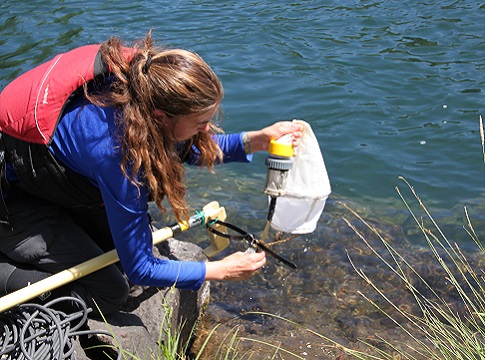Related News
Related News
-
NASA partners with EWEB to assess wildfire impacts to drinking water
NASA's Earth Information Center shares a new video detailing how EWEB's Drinking Water Source Protection work is advising new research tools
Find Out More -
EWEB prepares for wildfire season with risk mitigation measures
EWEB is building a more resilient electric system to weather various types of disasters, from wildfire to winter storms.
Find Out More -
Sustainability Snapshot - Homes for Good May 2025
Our first Sustainability Snapshop highlights a project where EWEB teamed up with longtime partner, Homes for Good, to deliver ductless heat pumps to income-eligible apartment rentals.
Find Out More -
EWEB environmental specialist wins prestigious awards for publication
Article recounting EWEB’s efforts to protect the McKenzie River after Holiday Farm Fire earns national recognition
Find Out More -
Last Call for EWEB/Lane County Septic Grants
Holiday Farm Fire recovery program now eligible for businesses, residential property owners who purchased post-fire, to cover inspection costs and new construction
Find Out More -
EWEB Pilots New Line Safety Program for 4th graders.
This year, EWEB is ramping up power line safety for children, specifically 4th graders.
Find Out More -
Improving habitat resiliency throughout the Upper McKenzie
Environmental Responsibility is a core guiding value for EWEB decision-making. This summer, EWEB continues its commitment to environmental stewardship with a robust slate of habitat enhancement updates throughout the upper McKenzie River, across the footprint of the Carmen-Smith Hydroelectric Project.
Find Out More -
EWEB weighs multi-billion-dollar decision affecting energy supply
EWEB is weighing energy supply decisions that will cost nearly $2 billion over the next two decades.
Find Out More -
Habitat Restoration Underway on McKenzie River
Partners at EWEB, McKenzie River Trust, the McKenzie Watershed Council, and the U.S. Forest Service broke ground on a major floodplain restoration project in Quartz Creek.
Find Out More -
Hayden Bridge celebrates 75 years of service as EWEB looks forward to a new era of water resiliency
EWEB Water Treatment Supervisor, Toby Dixon, looks back at how the Hayden Bridge Water Filtration Plant has changed over the years and explains what EWEB is doing to secure a more resilient water future.
Find Out More -
EWEB opens applications for 2025 Electric Mobility Community Grant
The Eugene Water & Electric Board is now accepting applications for the 2025 Electric Mobility Grant, reinforcing EWEB's commitment to sustainability and cleaner transportation.
Find Out More -
Watch the Recording: Financial Preparedness for Disasters
How will you financially recover after a disaster? This seminar gives key insights into preparing your finances ahead of time.
Find Out More -
Greenpower subscribers vote to award Greenpower Grant to SquareOne Villages
The Greenpower Grant, funded solely by voluntary customer subscriptions, supports local sustainability projects.
Find Out More -
EWEB reaffirms commitment to resilience with Wildfire Mitigation Plan approval
The utility is testing new equipment, leveraging technology, and incorporating third-party expertise to bolster electric system resiliency to a range of threats, including wildfire.
Find Out More -
Vote now for the winner of the 2025 Greenpower Grant
Get ready to cast your vote for the winner of the 2025 Greenpower Grant. EWEB is excited to announce the eligible candidates for this year's grant award! The winner of the Greenpower Grant will be voted on by Greenpower subscribers. Learn more about each origanization and their proposal before casting your vote.
Find Out More - Show More
Recent Rains Impact Drinking Water Treatment but Not Quality
November 18, 2020

Heavy rain in the McKenzie Valley over the weekend gave EWEB's water quality team a close look at the potential impacts from the Holiday Farm Fire on source water. Although increased monitoring detected elevated turbidity and nutrient levels, the Hayden Bridge Water Filtration Plant was able to modify treatment processes to ensure safe, high quality drinking water to homes and businesses.
The Holiday Farm Fire burned 173,000 acres and more than 430 homes in the watershed that produces every drop of water flowing out of Eugene's taps. In the aftermath, we are working in partnership with local and state agencies, watershed researchers, forest management agencies and local non-profits to identify threats to our water supply and public health, prioritize watershed restoration activities and help with long-term community recovery.

EWEB is working with landowners and community partners to keep burned debris and toxic ash out of the river until it can be safely removed.
Partnering with Oregon State University and Pacific Northwest National Laboratory, EWEB recently placed additional water quality monitoring stations in the mainstem McKenzie River and several smaller creeks and tributaries. This enhanced monitoring provides key information on the impacts of the fire on water quality during major storm events. In addition, EWEB worked with the U.S. Geological Survey to expand the network of gaging stations that include water quality sensors as an early warning system to allow water treatment plant operators to prepare for and adjust treatment strategies prior to the river water entering the filtration plant.
During this weekend's heavy rainfall, monitors detected turbidity levels that were 12 times higher than typical for the McKenzie River—a result of sediment and other particles from the surrounding land washing into the river. Real-time water quality sensors also detected an increase in organic material coming from the burned and eroded landscape around and above the river.

Monitoring equipment at Simmonds Creek where it enters Blue River showed elevated turbidity, whch refers to cloudiness or haziness caused by suspended solids.
Fortunately, the turbidity and organic impacts experienced so far are well within EWEB's filtration plants capability and capacity to handle.
Over the weekend, our water treatment staff increased use of powdered active carbon (PAC) and rapid sand filtration systems to ensure safe, high quality water and to mitigate any potential taste and odor concerns.

At the Hayden Bridge Water Filtration Plant we use a three step process to turn water from the McKenzie River into safe drinking water.
We anticipate enhanced monitoring and treatment will continue for some time.
The Holiday Farm Fire damage to the watershed has the potential to degrade water quality, increase treatment costs, and reduce the production capacity of EWEB's Hayden Bridge treatment plant for years, a fact that is driving an intense, multi-agency effort to install erosion control measures and revegetate burned landscapes in the McKenzie watershed as quickly as possible.

Erosion control measures are being installed to keep sediment and other burned material from washing into the river.
"Protecting source water is protecting the community," said EWEB's Watershed Restoration Program Manager Karl Morgenstern. "On the heels of the Holiday Farm fire, there is a both a need and opportunity for community-wide mobilization to restore the watershed and continue to protect this valuable resource."
Learn more about Holiday Farm Fire Recovery and Watershed Restoration

